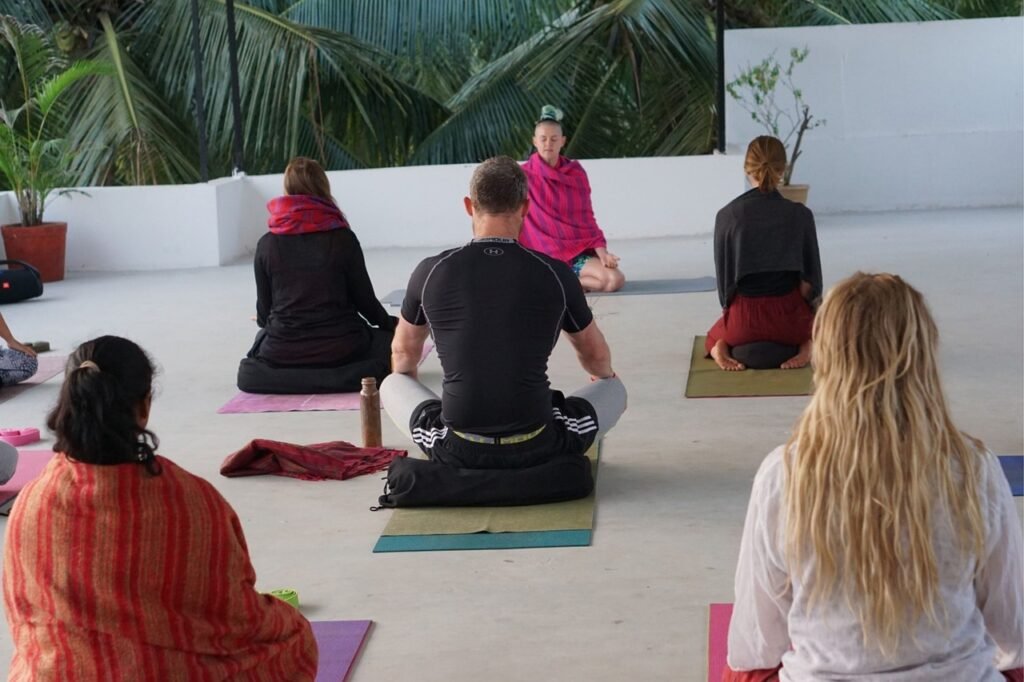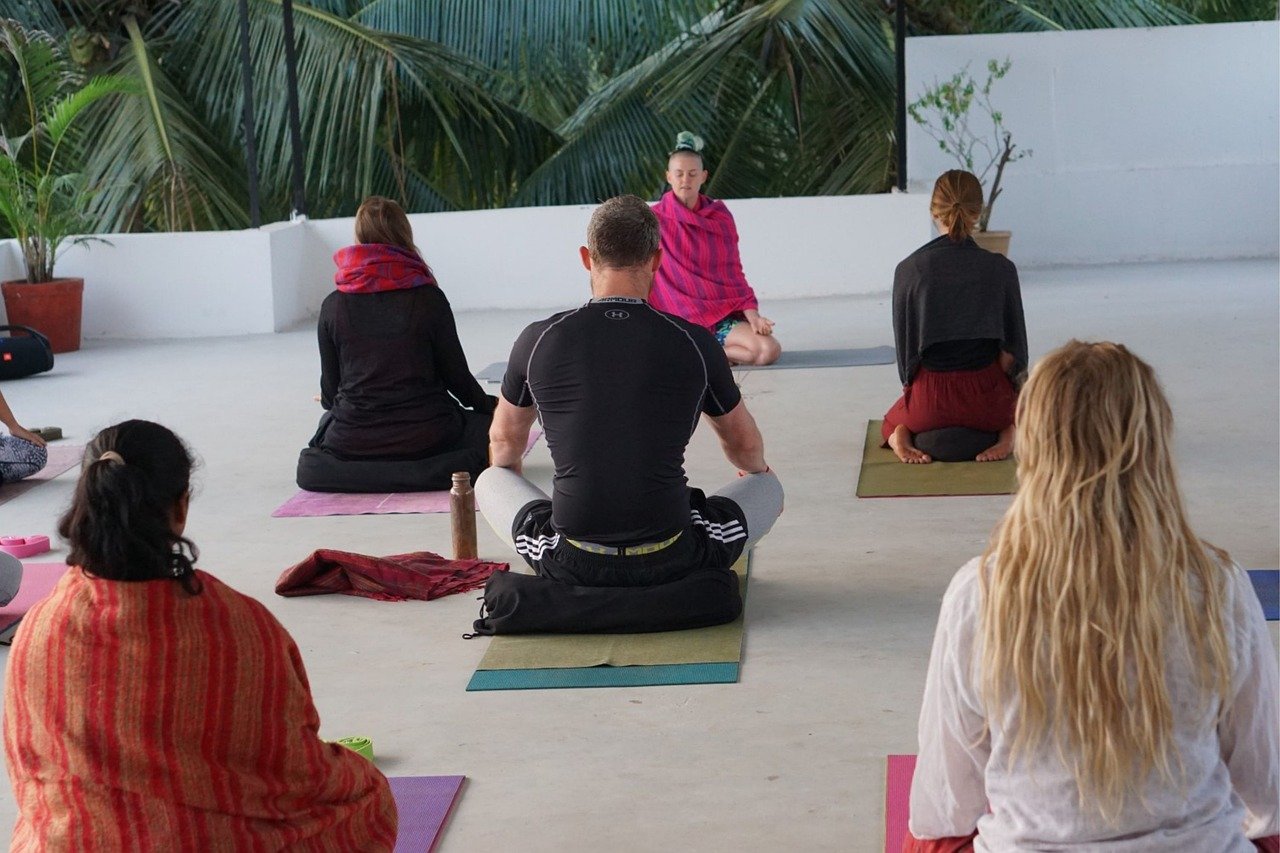Imagine being able to relax deeply and reduce your stress levels simply by practicing a form of yoga called Yoga Nidra. This ancient practice, which translates to “yogic sleep,” goes beyond the physical aspect of yoga to bring about a state of complete relaxation where the mind enters a state of deep rest. By immersing yourself in this calming practice, you may find yourself discovering a newfound sense of tranquility and relief from the burdens of stress and tension.

What is Yoga Nidra?
Yoga Nidra, also known as yogic sleep, is a guided meditation technique that allows you to enter a state of deep relaxation while remaining awake and aware. It is a systematic approach to experiencing physical, mental, and emotional relaxation, and it has been practiced for thousands of years. Yoga Nidra is derived from the ancient Indian wisdom tradition of yoga and is often described as a form of meditation or a practice of conscious relaxation.
Definition of Yoga Nidra
The term “Yoga Nidra” is derived from the Sanskrit words “yoga,” which means union or connection, and “nidra,” which means sleep. However, Yoga Nidra is not the kind of sleep we experience at night, but rather a state of conscious relaxation where the body is relaxed, and the mind is highly receptive to suggestions and intentions.
Origin and History
Yoga Nidra has its roots in ancient Indian traditions and can be traced back to the Upanishads, sacred texts of wisdom and spirituality. It was widely used by yogis and sages to deepen their meditation practice and unlock the profound potential of the mind. In modern times, Yoga Nidra was popularized by Swami Satyananda Saraswati, the founder of the Bihar School of Yoga in India. He developed a systematic approach to Yoga Nidra, which has become widely used and adapted across the world.
How Does Yoga Nidra Work?
Yoga Nidra works by guiding you into a state of deep relaxation that helps to release physical, mental, and emotional tension. It is a practice that systematically takes you through different stages, helping you to relax and let go of any stress or anxiety that you may be holding onto.
The Stages of Yoga Nidra
Yoga Nidra typically consists of several stages, starting with a conscious relaxation of the body, followed by guided visualization and exploration of sensations, emotions, and thoughts. This is followed by setting specific intentions or resolutions, and finally, gradually bringing the awareness back to the external environment.
The Role of Brain Waves
During Yoga Nidra, the brain transitions from the waking state, characterized by beta brainwaves, to a state of deep relaxation and silence. This shift in brainwave activity allows for a greater connection to the subconscious mind and the unlocking of self-healing abilities. The practice of Yoga Nidra promotes the dominance of alpha and theta brainwaves, which are associated with deep relaxation, creativity, and insight.
The Relaxation Response
Yoga Nidra activates the body’s innate relaxation response, which is the opposite of the stress response. When you are in a state of deep relaxation, the body’s systems function more efficiently, and the mind becomes clear and calm. The practice of Yoga Nidra triggers the release of endorphins, dopamine, and other neurotransmitters, which help to counteract stress and induce a profound sense of calmness and well-being.
Benefits of Yoga Nidra
Yoga Nidra offers a wide range of benefits for both physical and mental well-being. Regular practice can have a transformative effect on your overall health and quality of life.
Physical Benefits
One of the primary physical benefits of Yoga Nidra is deep relaxation, which helps to reduce muscle tension and physical stress. It can also improve sleep quality, enhance immune function, regulate blood pressure, and aid in pain management. Moreover, Yoga Nidra contributes to a healthier cardiovascular system and helps to balance the hormonal and digestive systems.
Mental and Emotional Benefits
Yoga Nidra has a profound impact on mental and emotional well-being. It can help to reduce anxiety, depression, and other mood disorders by promoting a sense of calmness and inner peace. Regular practice of Yoga Nidra can also enhance concentration, memory, and creativity, as well as foster greater self-awareness and self-acceptance.
Stress Reduction
Stress reduction is one of the most sought-after benefits of Yoga Nidra. By activating the relaxation response and soothing the nervous system, Yoga Nidra helps to alleviate stress and its negative effects on the mind and body. With regular practice, you can develop a heightened sense of resilience to stress, allowing you to navigate life’s challenges with ease and composure.
Research on Yoga Nidra
The benefits of Yoga Nidra have been studied extensively, with scientific research confirming its effectiveness in various areas of health and well-being.
Scientific Studies
Numerous scientific studies have shown that Yoga Nidra can significantly reduce stress, anxiety, and symptoms of PTSD. It has also been found to improve sleep quality, enhance cognitive function, and alleviate chronic pain. Additionally, research suggests that Yoga Nidra has positive effects on blood pressure, heart rate variability, and immune function.
Effectiveness
Yoga Nidra’s effectiveness can be attributed to its ability to activate the body’s relaxation response and promote self-regulation. Its impact on the brain’s neural pathways and the release of beneficial neurotransmitters contribute to its power to bring about positive change in physical and mental health.
Practicing Yoga Nidra
To fully experience the benefits of Yoga Nidra, it is essential to create a suitable environment and prepare yourself for the practice.
Finding a Suitable Environment
Select a quiet and comfortable space where you can lie down without any distractions. Ensure the room is dimly lit and at a comfortable temperature. You may choose to use a yoga mat, cushion, or blanket to support your body during the practice.
Preparing for Yoga Nidra
Before beginning the practice, it is recommended to set an intention or Sankalpa, which can be a positive affirmation or goal you wish to manifest in your life. This helps to guide your subconscious mind towards positive transformation. It is vital to have an open mind, be willing to let go of expectations, and approach the practice with curiosity and self-compassion.
The Practice
During the practice of Yoga Nidra, you will be guided through a series of verbal instructions and visualizations. It is essential to follow the instructions without effort or strain, allowing yourself to relax fully and surrender to the experience. The practice typically lasts around 20 to 45 minutes, during which you will be in a state of deep relaxation but remain consciously aware.
Different Yoga Nidra Techniques
There are several variations and traditions within the practice of Yoga Nidra. Here are a few popular ones:
Satyananda Yoga Nidra
Satyananda Yoga Nidra, developed by Swami Satyananda Saraswati, is a systematic and comprehensive approach to the practice. It involves a specific sequence of relaxation techniques, visualizations, and breath awareness, which aims to purify, harmonize, and rejuvenate the mind and body.
Integrative Restoration (iRest)
iRest, developed by Richard Miller, is a modern adaptation of Yoga Nidra that combines ancient wisdom with contemporary psychology. It focuses on developing a sense of inner resourcefulness and resilience while addressing specific challenges or areas of concern in one’s life.
Other Variations
Apart from Satyananda Yoga Nidra and iRest, there are many other variations of the practice that have been developed and adapted by different teachers and schools of yoga. These variations often incorporate specific themes, such as healing, stress reduction, or spiritual exploration, making Yoga Nidra suitable for a wide range of individuals and needs.
Important Points to Consider
While practicing Yoga Nidra, it is essential to keep the following points in mind:
Seeking Proper Guidance
If you are new to Yoga Nidra or any meditation practice, it is recommended to seek guidance from an experienced teacher or use reliable audio recordings. Proper guidance ensures that you practice safely and receive the maximum benefits from the practice.
Adapting to Individual Needs
Yoga Nidra can be adapted to suit individual needs and abilities. Whether you have physical limitations, chronic health conditions, or are pregnant, modifications can be made to ensure your comfort and safety. It is important to listen to your body and modify the practice accordingly.
Consistency and Discipline
To fully reap the benefits of Yoga Nidra, regular and consistent practice is key. Aim to practice at least a few times a week, if not daily, to experience lasting positive changes in your physical, mental, and emotional well-being. Discipline and commitment to the practice will help you integrate Yoga Nidra into your lifestyle effectively.
Combining Yoga Nidra with Other Techniques
Yoga Nidra can be enhanced by combining it with other yoga techniques, such as yoga asanas, pranayama (breathing techniques), and meditation.
Yoga Asanas
Practicing gentle yoga asanas before engaging in Yoga Nidra can help release physical tension and prepare the body for deep relaxation. Incorporating a few simple stretches or restorative poses can enhance the overall experience of Yoga Nidra.
Pranayama (Breathing Techniques)
Pranayama exercises, such as deep abdominal breathing or alternate nostril breathing, can be practiced before or during Yoga Nidra to promote further relaxation and balance the energy within the body. These breathing techniques help to calm the mind and deepen the state of relaxation.
Meditation
Following Yoga Nidra with a short period of meditation can help integrate the experience and deepen the sense of inner peace and stillness. Meditation nourishes the mind, enhances mindfulness, and cultivates self-awareness, thereby complementing the benefits of Yoga Nidra.
Using Yoga Nidra for Specific Purposes
Yoga Nidra can be utilized as a powerful tool for addressing specific challenges or goals. Here are a few areas where Yoga Nidra can offer targeted support:
Sleep Improvement
If you struggle with insomnia or have difficulty getting a restful night’s sleep, incorporating Yoga Nidra into your bedtime routine can help you relax, quiet the mind, and prepare your body for sleep. The practice of deep relaxation combined with focused intention-setting can alleviate sleep disturbances and promote better sleep quality.
PTSD and Trauma Recovery
Yoga Nidra has shown promise in assisting individuals who have experienced trauma, including those with Post-Traumatic Stress Disorder (PTSD). The practice helps to soothe the nervous system, release deeply held tension, and promote feelings of safety and well-being.
Anxiety and Depression Management
Yoga Nidra provides a safe and supportive practice for individuals dealing with anxiety, depression, or other mood disorders. The deep relaxation and emotional exploration during Yoga Nidra can help reduce anxiety symptoms, calm the mind, and cultivate a more positive outlook on life.
Conclusion
Yoga Nidra is a powerful practice that offers deep relaxation, stress reduction, and transformative benefits for both the mind and body. Its systematic approach to conscious relaxation and mind-body integration makes it a valuable tool for enhancing overall well-being. Whether you seek physical relaxation, emotional healing, or mental clarity, incorporating Yoga Nidra into your life can unlock your potential for profound self-discovery and inner peace. So, why not give it a try and experience the magic of Yoga Nidra for yourself?
